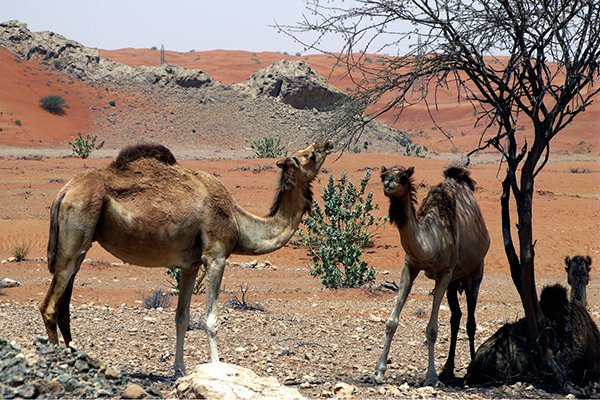Arabian Camel
vicharam (public domain), from Wikimedia Commons
Design
Arabian camels are one of two species of camel. Arabian camels are the species with one hump. The hump stores fat, which the camel can use for both energy and water on long journeys across the desert. Since camels almost never sweat, they do not lose water quickly, further equipping them for life in the desert. However, they have other design features for their life, such as sturdy footpads to help them walk on sand. They can close their noses to keep sand out as well. They have thick lips, designed for dealing with thorny desert plants. They live in herds of around twenty other camels, led by a dominant male. They can run over forty miles an hour at sprint!

Image courtesy of lonelyshrimp (public domain), via Wikimedia Commons
Features
Arabian camels are normally active during the day but tend to rest during the really hot hours of the afternoon.
Arabian camels have a double row of eyelashes that they use to keep sand out of their eyes.
Because of the heat, Arabian camels have a special network of blood vessels around the brain to cool the blood before it reaches the delicate brain tissue.
Fun Facts:
- The Arabian Camel is otherwise known as the Dromedary, which comes from a Greek word that literally means “running camel.” This also is the basis for their scientific name.
- Female Arabian camels appear to remember the places where they gave birth to their first calf.
Class: Mammalia
Order: Artiodactyla
Family: Camelidae
Genus: Camelus
Species: dromedarius
Size: From 5.6–6.6 feet at the shoulder
Diet: Plants, particularly thorny desert plants
Habitat: Northern Africa, the Middle East, and into central Asia, with an introduced population living in Australia.
- © 2024 Answers in Genesis
- Privacy Policy
- Contact
- About
